If you want to know about the site analysis or principle of daylighting design or acoustics in cinema, please click the link.
Acoustics in a studio is an essential factor to consider when designing and building a professional recording studio. A well-designed acoustic environment will ensure that the recordings are of high quality, and the final output is clear and accurate.
1) The case study
Location : TWR INDIA, L-15 green park, new delhi – 110016
Owners : The office is owned by trans world radio.
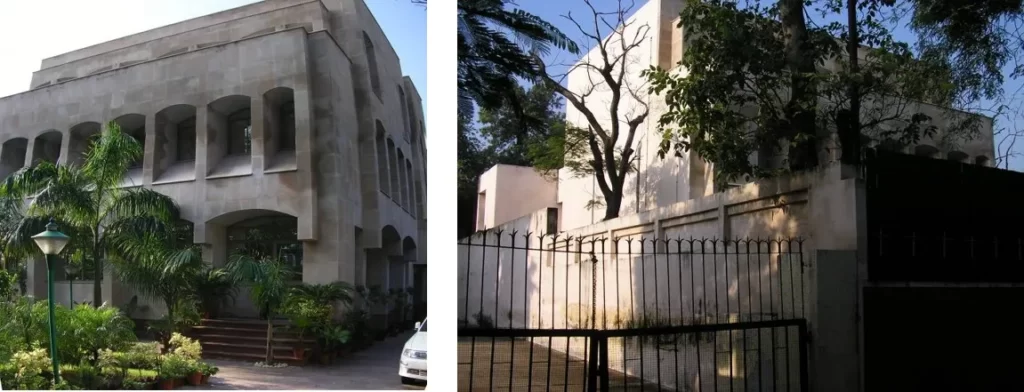
Size of facility : A small office building – 1100sqm floor area with 3 recording studio facilities.
2) Site plan
Location & site sonic environment:
- Office is located in a residential colony – green park
- Ambient noise is low but can reach 80-90 db at times (occasional trucks & air traffic – localizer path for airport is nearby

- Office building is corner plot, market is also nearby. Hence the added possibility of high noise levels outside.
- Studio facility inside cannot compromise on sound isolation due to such noice levels outside.
3) Basic zoning
Spatial organization:
- The office spaces are distributed all over the building. The ground floor contains the core (staircase & toilets) in the centre which serves the rest of the floor.
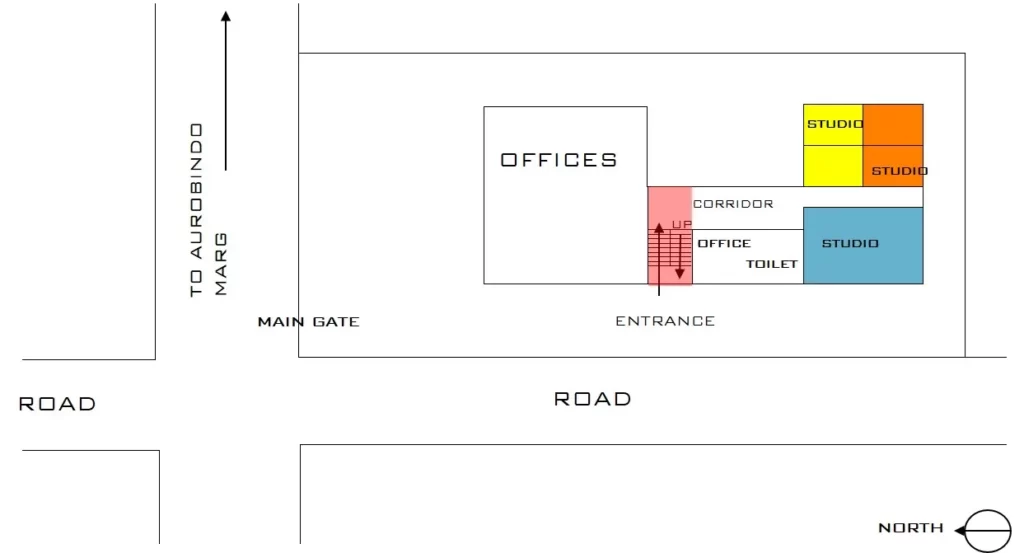
- Location of the core facilitates most efficient use of circulation space.
- Studios are at the rear of the plot – most private – least disturbed
4) Outside vs inside
- No acoustic treatment is provided outside the studio area.
- The photos show the contrast in the surface treatment outside the studio area and inside.
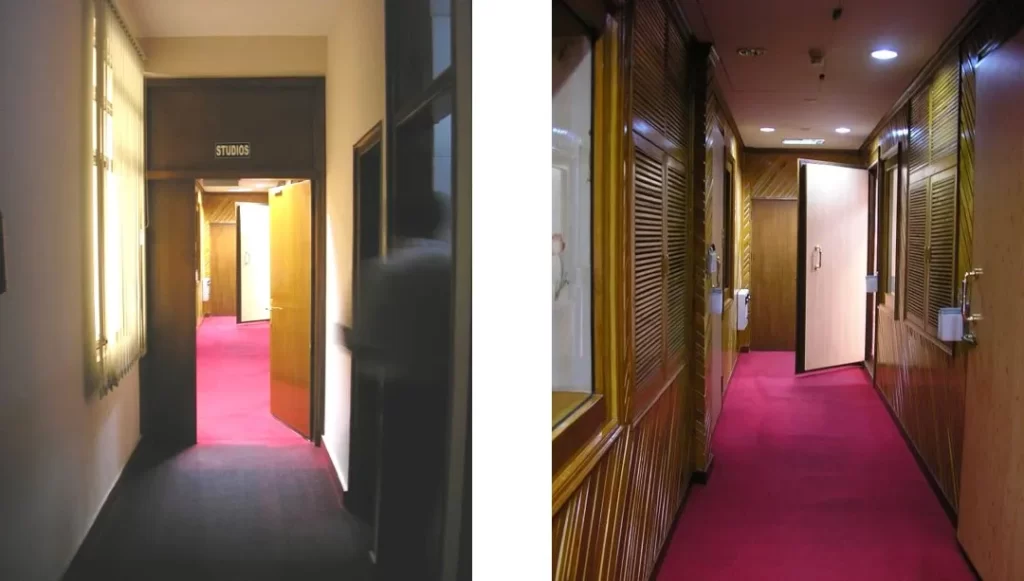
- The corridor allows “leaked” sound to dissipate – in case the doors are left open while editing.
- This circulation space is the first step in reducing ambient noise from outside the studio area to inside.
5) The recording facility
- The studio is structurally isolated by “floating” studio walls, preventing structural noise entering the studio.

- Studio walls are separated from the main structure by a gap filled with glasswool .
6) The control room
- The control room has a completely different acoustic response as compared to the outside corridor.

- Frequency absorbers ranging from 100 hz to 4000khz are placed on the surfaces in the studio.
- Low frequencies below 200 hz become very difficult to handle and hence absorbers below 200hz are generally not provided.
7) The studio
- The studio has similar acoustic treatment as the control room.
- Directly opposite glass, there are high frequency absorbers (on the back wall). This is because high frequencies get reflected off hard surfaces very easily.

- Reverberation time in the control room as well the studio should be ideally 0.35 sec.
- Frequency – perforation percentage chart
@ 125 hz -1.25% perforation out of total absorption area
@ 250 hz -6% perforation
@ 2000hz -12% perforation
8) Acoustic absrorbers Mid frequencies
Mid frequency absorbers:
- The walls appear to consist of simple wooden strips placed diagonally across the walls.

- Upon closer inspection, it is found that there are gaps between the wooden strips which amount to 12% per sqm with acoustic absorbers behind it. These absorbers cater to mid to high frequency ranges.
9) Acoustic absrorbers Low frequencies
- The ceiling, which looks ordinary actually acts as an ideal low frequency absorber
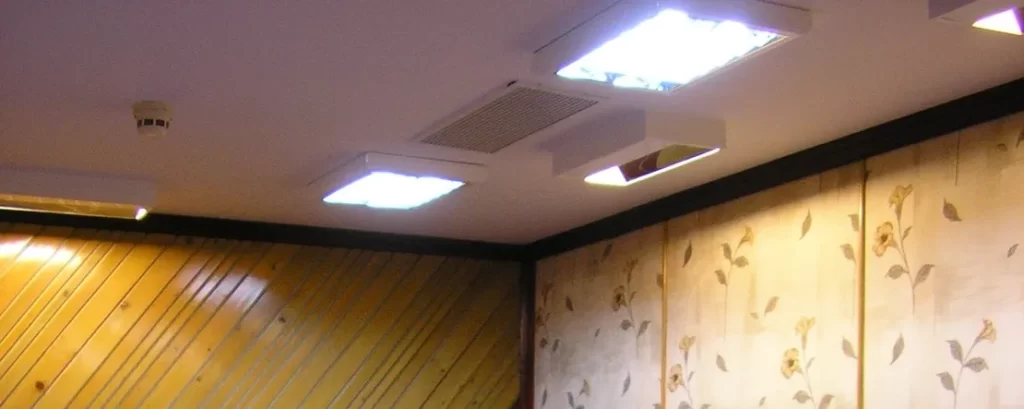
- Due to the larger wavelength of the lower frequencies, a lower degree of perforation is required. For frequencies ranging from 200 down, perforation size becomes close to nil.
- Frequency – perforation percentage chart
@ 125 hz -1.25% perforation out of total absorption area
@ 250 hz -6% perforation
@ 2000hz -12% perforation
10) Acoustic absrorbers High frequencies
- The floor is carpeted which acts as a very good high frequency absorbers.

Some specialized high frequency have also been added to even distribute the frequency absorbers within the room
- High frequencies have very little energy and get absorbed very quickly. By simply hanging curtains or changing the table cloth, the frequency response within the studio changes for high frequencies.
11) Acoustic reflectors
- The doors are some of the only large surfaces without sound absorption features.
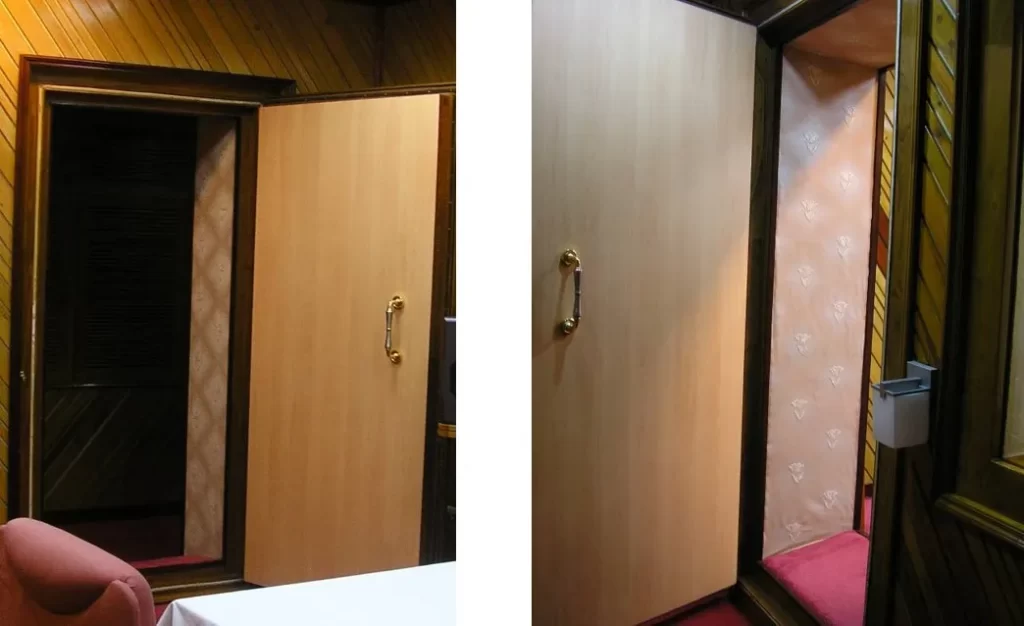
- To prevent overkill (over absorption) reflective surfaces are required within a studio to reflect off sound, creating a livelier environment.
- The glass windows between the recording studio and the control room acts as a large reflector.
- A large gap between the two sets of glass provides ample insulation
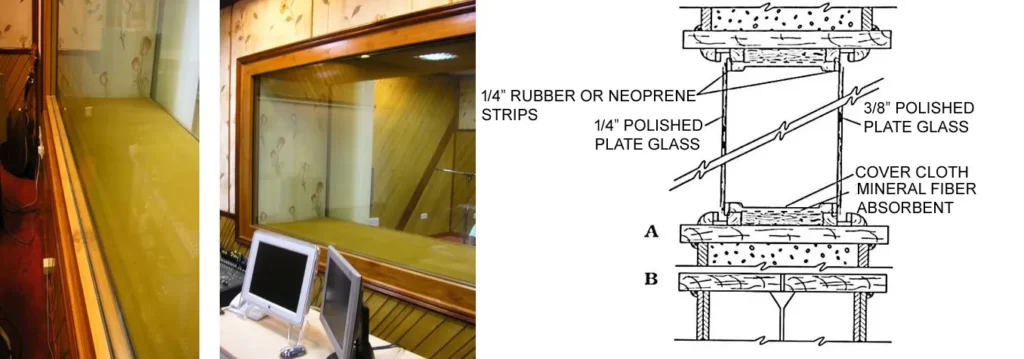
- This is the most vulnerable part of the studio is terms of acoustics and has to be handled very carefully.
- Dehumidifiers like
12) A/c noise insulation – muffler
- Air flow from the a/c units sometimes can cause whistling or hissing sounds from the ducts.
- Muffler absorb air flow noise and create a completely quiet environment.

- Mufflers are placed at critical points after which duct turns are minimum.
Eg. As soon as the duct enters the studio.
13) Ligthing moods
- Two types of lighting have been provided on the ceilings – one is task lighting (cool) and the other is for a warmer effect.
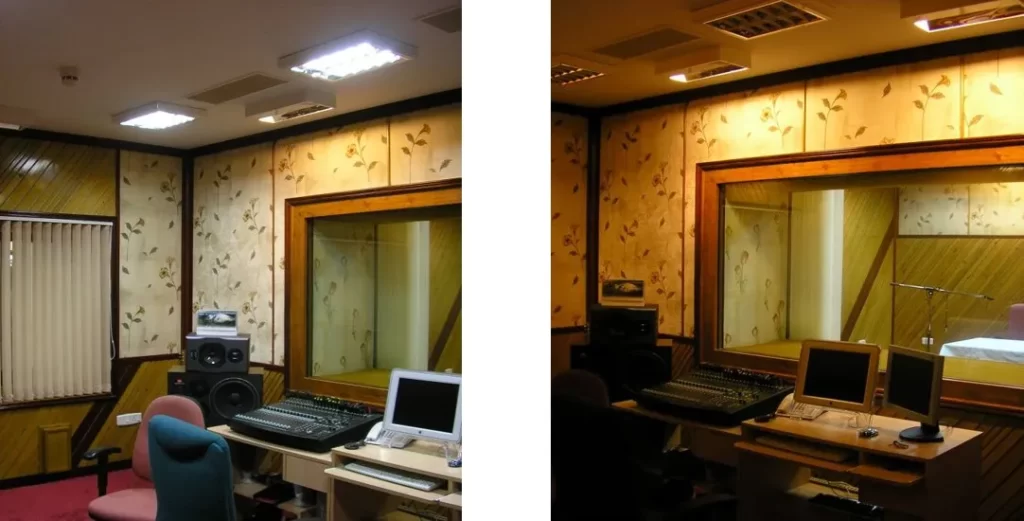
- When working for long hours, the studio recorder may get tired. A change in the lighting mood can prove to be very relaxing and play a positive impact psychologically.
14) Other isolation methods
- The control room has a window which lets in some daylight. It is very important for the studio operator – for good mental health).
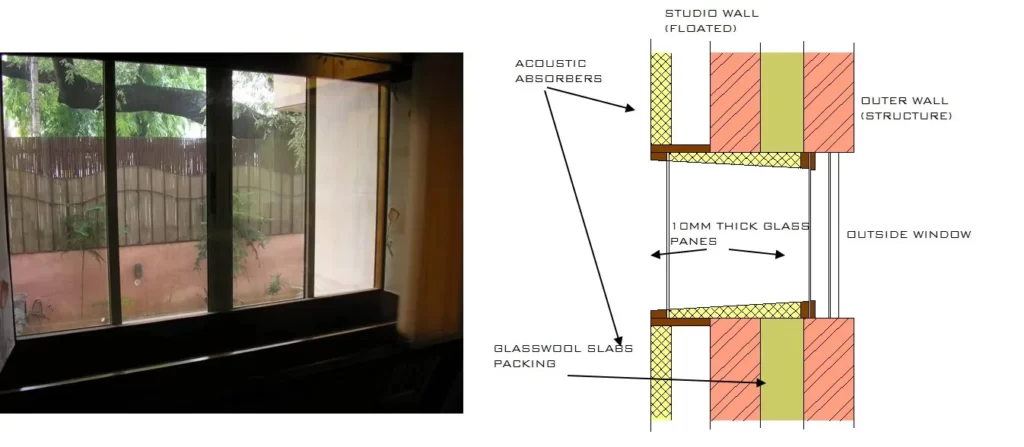
- Isolation of the studio while incorporating a large window such as this was a design challenge.
- The principle followed was the same as between the control room and the studio.
In conclusion, acoustics is an essential factor in the design and construction of a professional recording studio. Skywalker Sound is an excellent example of a studio that has been designed and built with acoustics in mind, and this has resulted in the production of high-quality sound recordings.